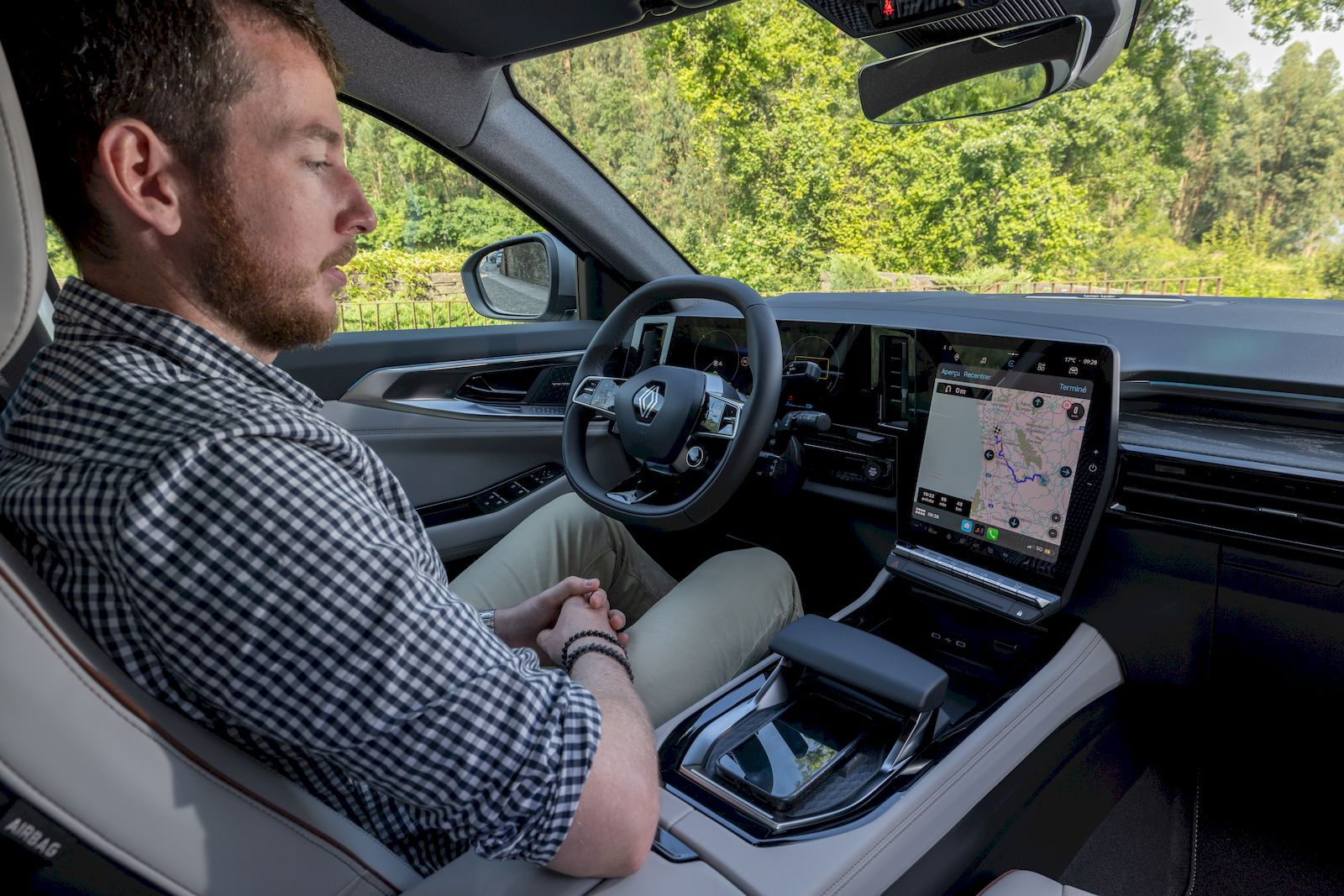Renault is one of the first manufacturers to offer Google services directly integrated into its new cars. During the tests of the new Renault Espace, we were able to test the latest version of Android Automotive at Renault, the opportunity to note that the border with the universe of the smartphone is very thin today.
Tired of your car’s on-board system? Between slowness, bugs of all kinds, latency, lagging and never-updated GPS or catastrophic ergonomics, there are few satisfactory on-board infotainment systems today.
With the arrival of Apple CarPlay and Android Auto, these concerns have been partly resolved, but it still happens via an external element, namely your smartphone. What if your car screen itself became a kind of smartphone?
This is what is happening with several brands, which have entered into a partnership with Google for the development of their operating system. Renault and Volvo are the main manufacturers to benefit from it todaybut Honda, Ford, Cadillac or even Chevrolet will also gradually delegate the infotainment part to Google.
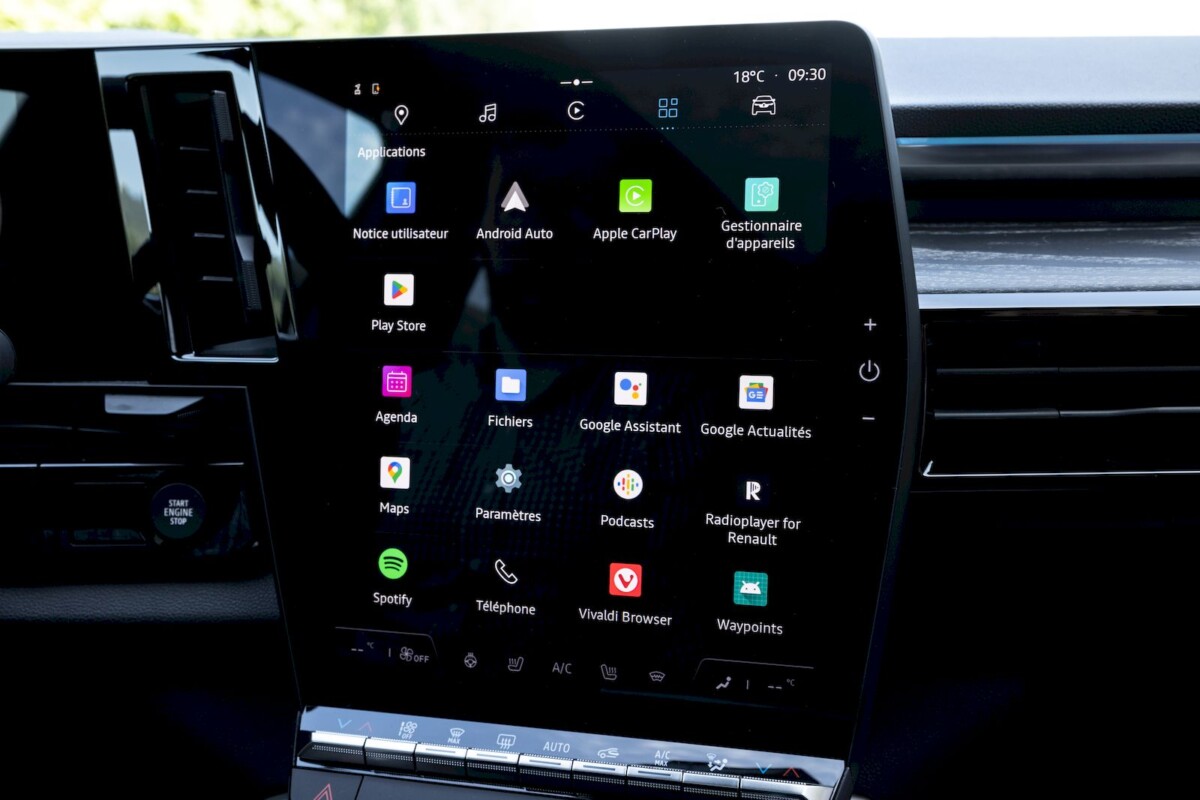
But can we really blame the manufacturers for having been so far behind in this area? In addition to not really having the appropriate know-how, they are bearing the brunt of the digital evolution which is going much faster than the development of a car itself.
Today, with the advent of the electric car and driving aids, the infotainment system is an integral part of a car’s ecosystem. An unsatisfactory experience on this point, especially for new models, and it will make you regret having opted for a recent car.
Android Automotive: what is it?
We have already been able to test the first generation Android Automotive system during our test drive of the electric Volvo XC40 about two years ago. The result was quite spectacular, with a real leap forward compared to the on-board systems we knew. At present, only the systems developed by BMW, Audi, Mercedes and Tesla can really competeeverything else being completely at bay.
Based on Android, the Android Automotive infotainment system is close to that of a smartphone. The home page is a little different from the cars we’re used to seeing with multiple tabs, a portal for apps, and even a notifications pane, especially for updates.
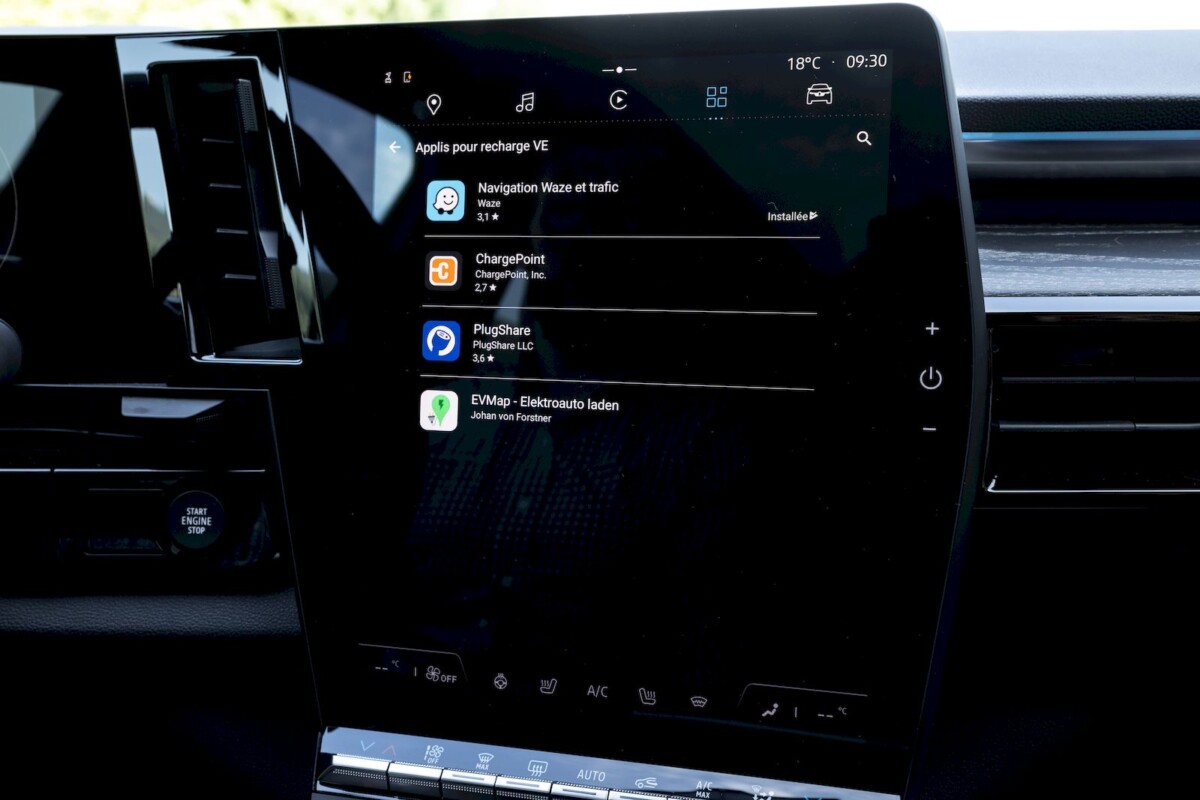
There is also access to the Google Play Store in order to download applications there. The catalog is regularly updated, with now applications made especially for the car, such as games to pass the time or even applications that we are used to finding on smartphones. So, it is possible to download Waze and integrate it directly into its operating systemwithout having to connect your smartphone with Apple CarPlay and Android Auto.
Again, as on a smartphone, it is possible to organize your screen as you see fit, by sliding an application with your fingertip on another part of the 12-inch screen arranged in portrait format.
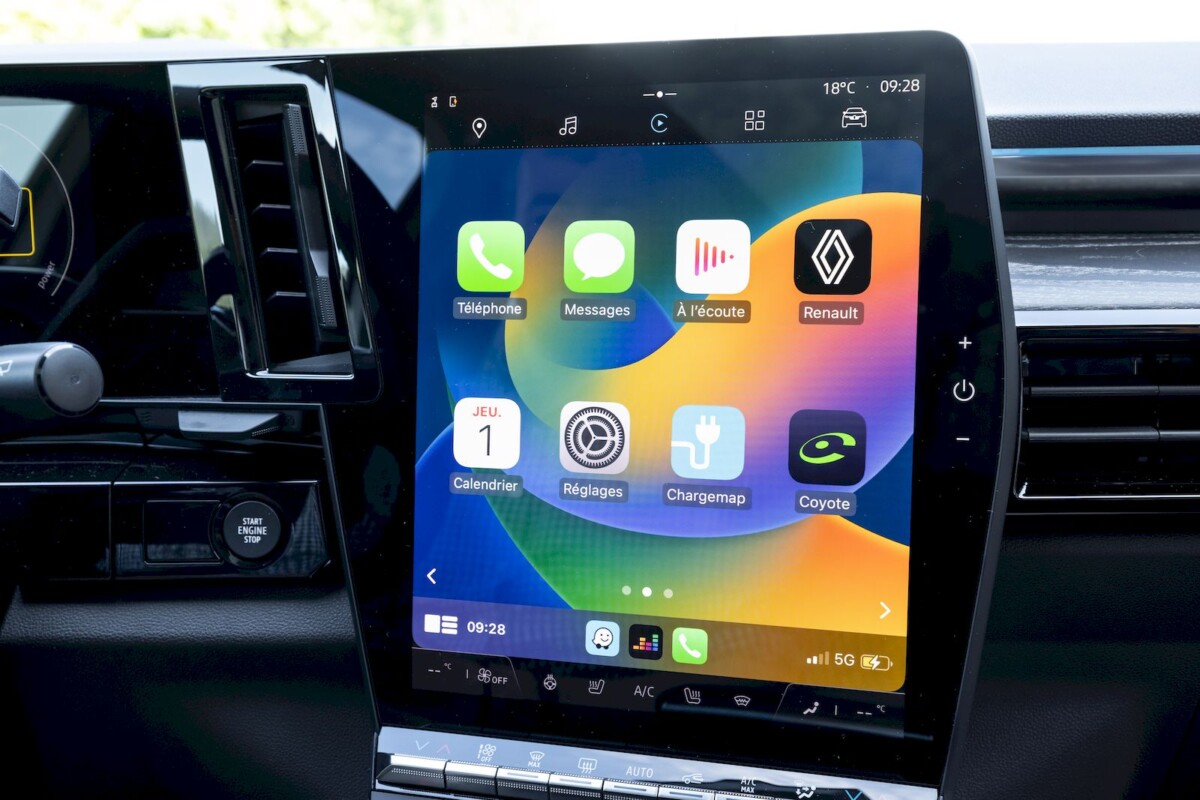
To get the most out of the experience and connectivity, the customer must activate his subscription by connecting to the Orange website. All Renault cars are equipped with an e-SIM, which is activated when you take out a contract with Orange, with data to operate the car’s on-board system.
What about the navigation part?
As stated above, we were able to take advantage of the new Android Automotive system on board the new Renault Espace, a 200 hp, seven-seater hybrid model, which is essentially based on the bases of the Renault Austral. Its dashboard is quite similar to the Renault Mégane E-Tech, with two screens, one located under the eyes of the driver and which is 12.3 inches and the other, tactile, 12 inches. Moreover, Android Automotive is already present on the Mégane E-Tech as we have seen in our test.
Android Automotive is becoming more democratic across the entire Renault range (not on the new Clio, too bad), and the system is constantly improving with updates over the air. The OpenR Link infotainment system benefits from very clear ergonomics with physical controls as shortcuts under the screen, in particular for the air conditioning.
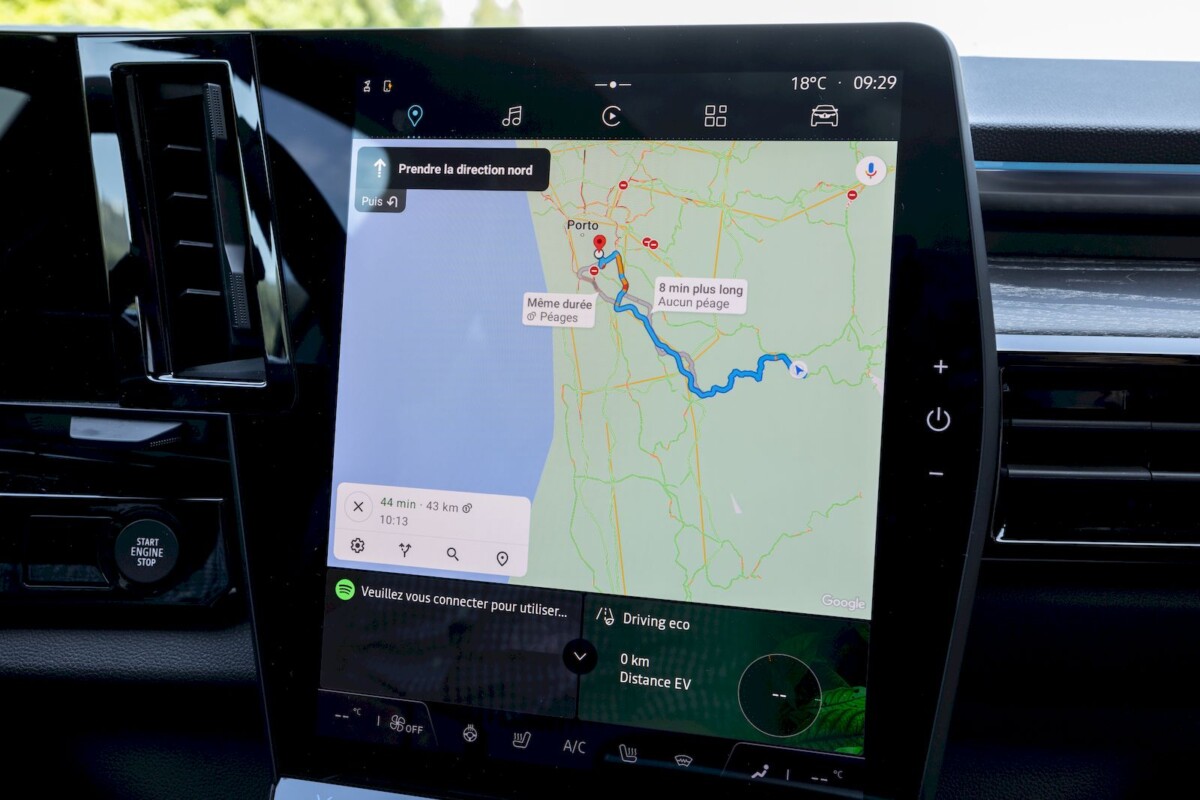
For the navigation part, surely the most important for a car, you will therefore have direct access to Google Maps. It will also be possible to download native Waze. Once downloaded, you will have to scan a QR Code with your phone which will be displayed on the screen of the car to then benefit from the application directly from the car with your own account.
The big positive is that it is possible to put Google Maps (which integrates the car’s route planner on the Mégane E-Tech) on the 12.3-inch instrument screen and Waze ( to benefit from the indication of speed cameras) on the central touch screen. The reverse, however, is not possible.
Usually in cars with a navigation system, if you launch Google Maps, Apple Maps or Waze via Android Auto or Apple CarPlay, the main navigation system turns off.

Our test Renault Espace not being electric, there is no route planner function. However, this system is available on the Renault Mégane E-Tech. Simply enter your destination into the navigation system, then press ‘Stop to Charge’ and the car will give you the stations to stop at. Unfortunately, the system does not allow to know if the terminals are operational.
Therefore, do not hesitate to check on the ChargeMap application, or via other applications allowing you to find terminals, to find out if the terminal that the navigation is targeting is indeed functional. Nevertheless, we can imagine that Renault and Google will soon offer this service which is tending to become essential, as the number of faulty terminals can sometimes be substantial.
A voice command to the point
The Renault Espace is equipped with a voice command allowing certain functions of the car to be activated without having to move your hands from the steering wheel. Renault has also turned to Google and its Assistant, much more relevant than the voice assistance that we have been able to try on other models.
In addition to activating the air conditioning, adjusting the temperatures or choosing the radio, you can activate the Assistant via a “Hey Google” followed by your indication to enter a GPS destination on the Google Maps system. For example : “Ok Google, go to Le Havre”to go directly to the city center of the Norman port city.
Available apps
As stated above, it is possible, via the Google Play Store, to download applications. On the other hand, we are still quite far from everything we can have on a smartphone and a tablet. But generally speaking, given the fact that we’re in a car, many applications would not necessarily be useful.
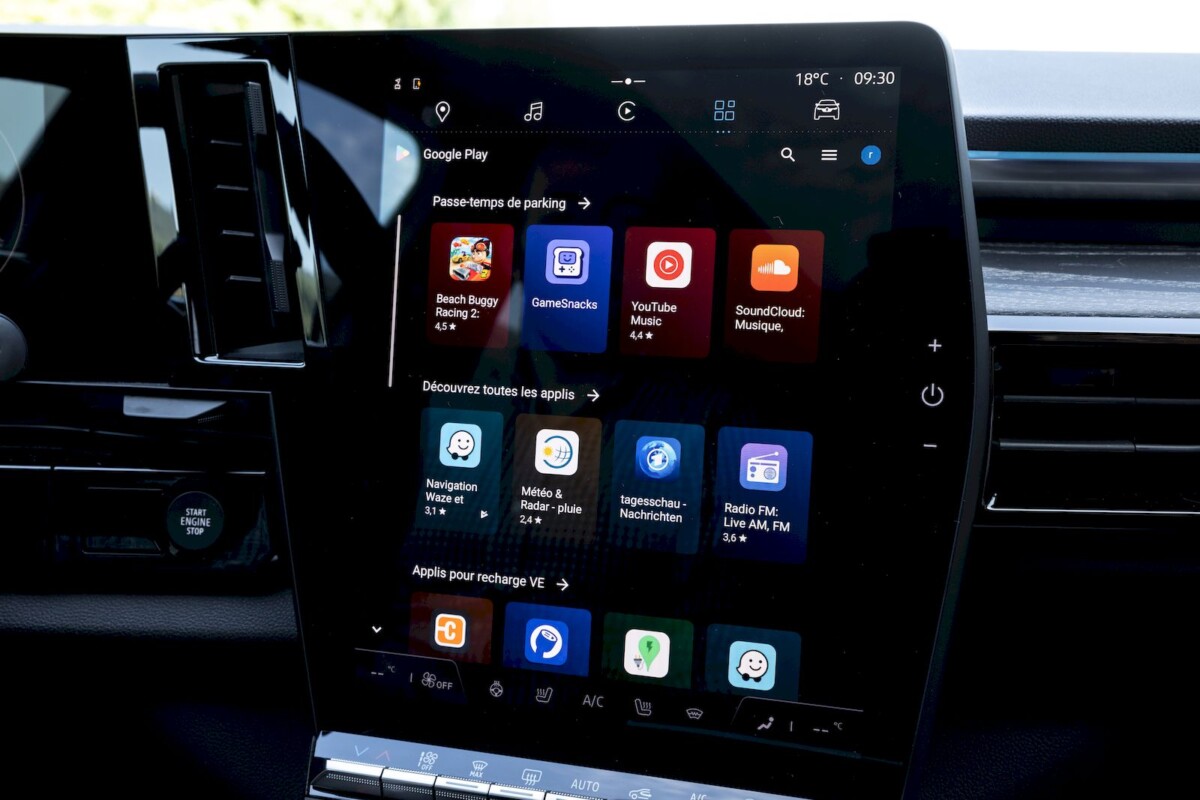
We can therefore download applications like Spotify for music, or even YouTube to watch videos and Netflix for series.
Renault and Google: what next?
At the end of last year, Renault and Google announced a new stage in their partnership with the signing of new contracts relating to the design of the digital architecture of the “Software Defined Vehicle”.
The two companies will develop a set of software components dedicated to the new “Software Defined Vehicle” platform, directly on board and on the periphery of the car. Renault and Google will deepen synergies and uses as part of the French group’s “Move to Cloud” strategy.
Behind these somewhat trivial formulations hides something quite simple in fact. Renault and Google will create a kind of “digital twin” with artificial intelligence to facilitate the continuous integration of services into the vehicle and the creation of new applications.
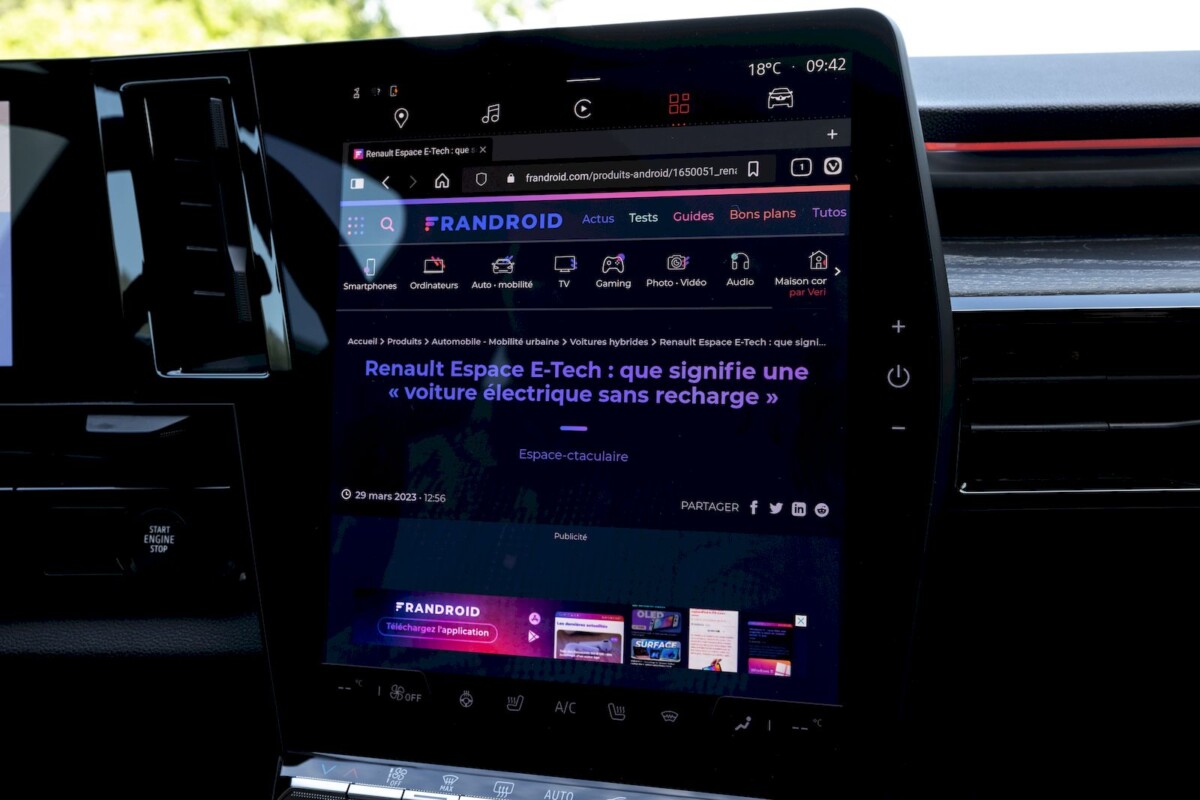
Renault will make more use of the Google Cloud platform to collect and analyze data from the various models marketed, and even those already sold. Renault clarifies that this will be done securely and without breach of privacy and in association with Qualcomm and its Snapdragon Digital Chassis systems.
In fact, this new software may be able to predict maintenance more accurately, while accentuating the on-board experience according to the driver’s habits.
The experience could even be ultra-personalized and it could even be used to create insurance models that take into account the use of the car and the behavior of the driver behind the wheel. The information collected can thus be used to create personalized services according to the needs of the driver.
Of course, there are some “ethical” issues, since if you tend to drive a little fast, you will be considered a risky driver and your insurance should cost you more. A bit intrusive isn’t it?
